Bigfoot Research Tree Break Pictures
All of these bigfoot research pictures of tree breaks were all taken by our Sasquatch Investigations of the Rockies team.
|
|
|
|
|
|
|
|
|
|
|
|
|
|
|
|
|
|
|
|
|
|
|
|
This behavior is consistent with what other groups are doing. All this makes for a compelling break worth noting and is a great sign if your lucky enough to find one like this.
Some tips from the field. Moose eat allot of greens. We know this because we have a mother that frequents our North Park location. Moose do break off branches in some instances, but with two distinctions. They leave teeth marks and allot of Scat. It is easy to tell the difference.
Finally, Elk eat allot of bark in the winter on Aspens, but is easy to distinguish there teeth marks as well. It is often like two to 4 grooves in the bark area of the trunk. Neither is ever at 8 feet in my experience. This should help.
Thanks, Mike-SIR
.
My son Trenton, my daughter Ashleigh, and her boyfriend Stephen and I went out to our Central Colorado location on Saturday 08/18/2012. We found the massive collection of tree breaks in a new area yet unexplored by us.
It is over 30 breaks of all shapes and sizes in an area of less than 100 yards. Many are torn completely off. This collection of Aspens only has most of their leaves still in tact indicating to me they have not been eaten.
.
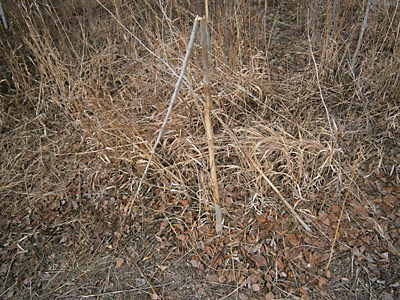 This photo is for reference only. It is to help you understand the differences in damages to trees in the forest.
This photo is for reference only. It is to help you understand the differences in damages to trees in the forest.
This is Mule deer damages to a small sapling Aspen tree. Please note the size of the tree, which is very small and it is broken and not peeled down.
Also, notice the bark and tree itself has been eaten down quite a bit. It is easy to tell deer, elk and moose damage to trees from Sasquatch damages.
This is an example of what is not Sasquatch related.
Also, this area all the trees in the immediate area had their bark eaten. This included trees big and small. The bigger trees none of which were broken only this one tiny one.
|
|
|
This tree break is similar to others we have found. It is clearly displayed on a ridge as is often the case. This was found
in north central Colorado by Dave Ottke and Michael Johnson. No other pines are broken in the area.
|
|
|
Find out more about our Bigfoot Research
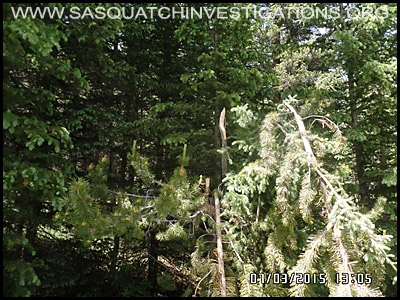
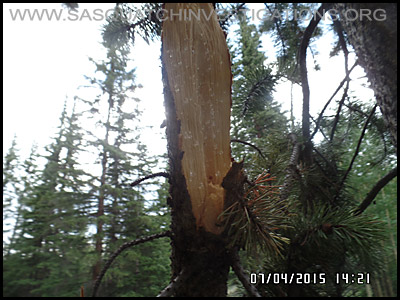
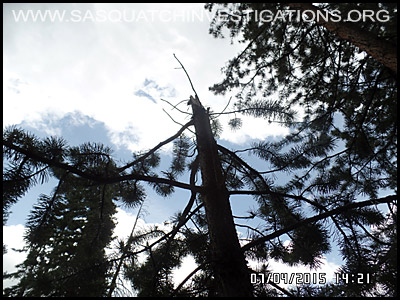
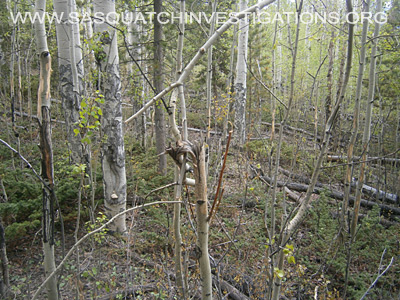
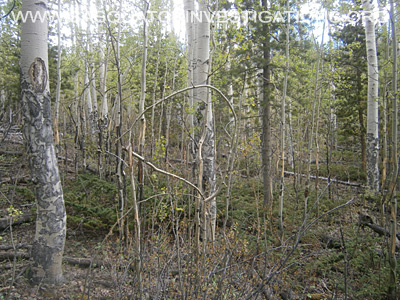
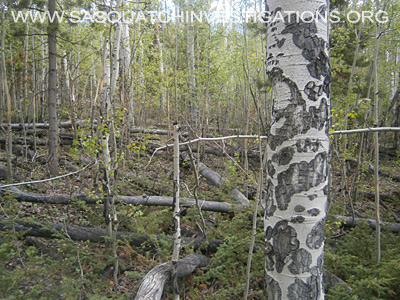
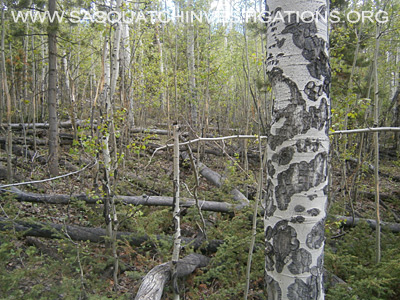

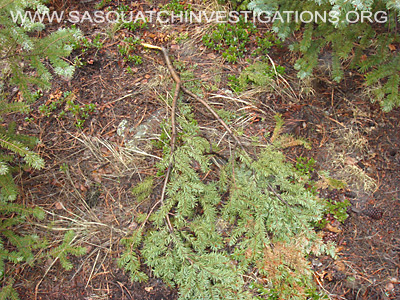
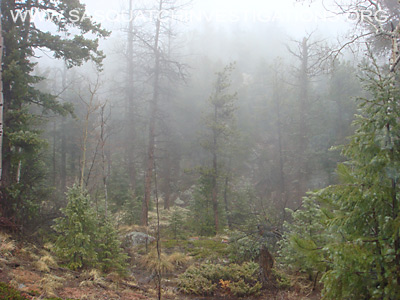
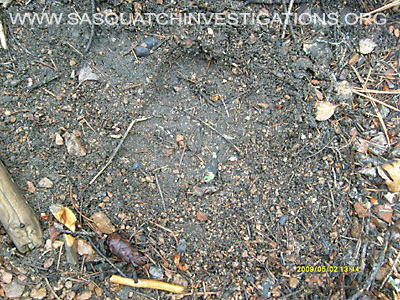
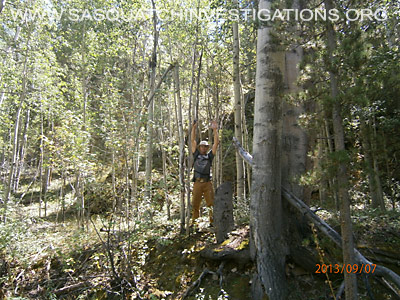
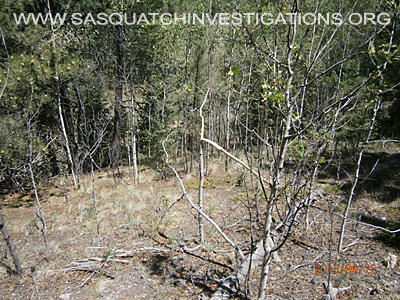
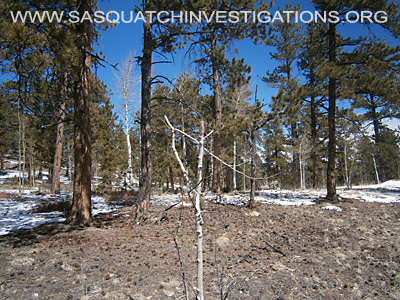
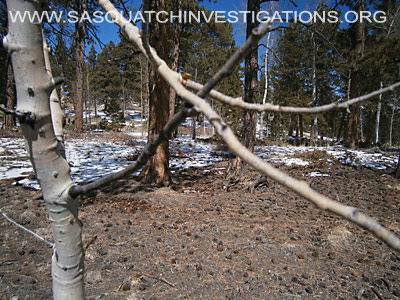
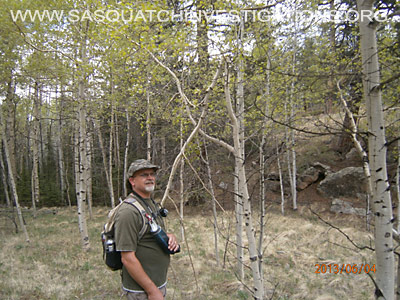
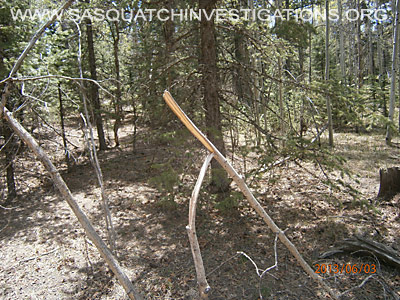
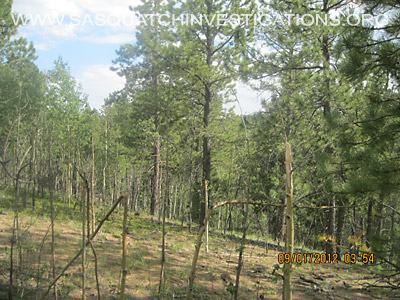
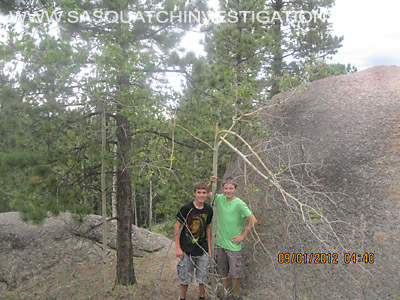
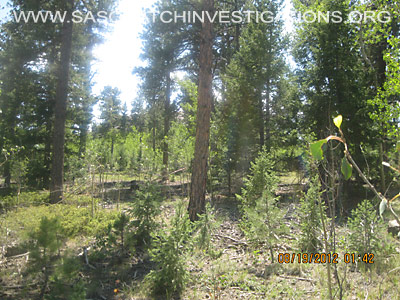
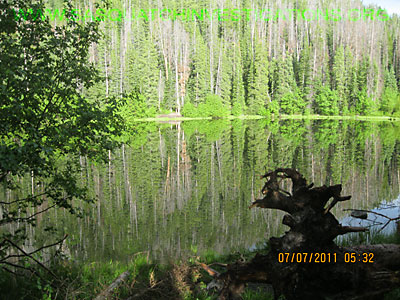
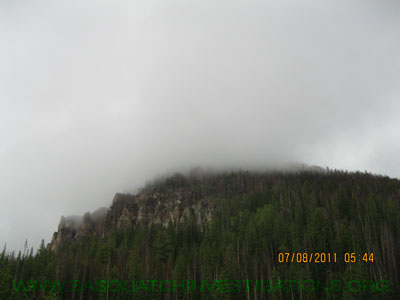
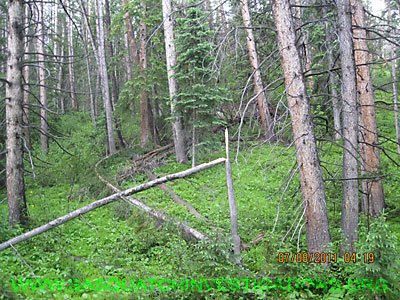
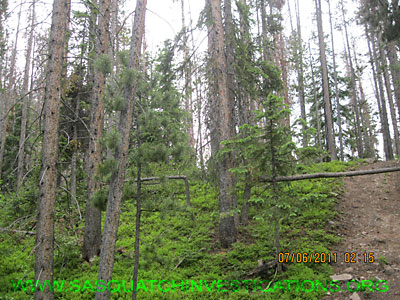
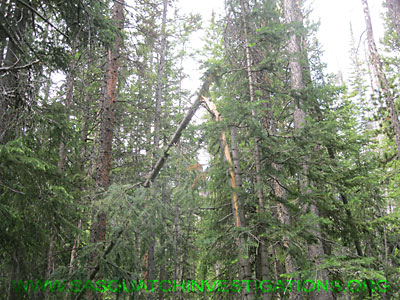
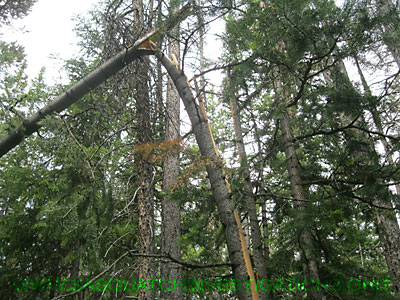
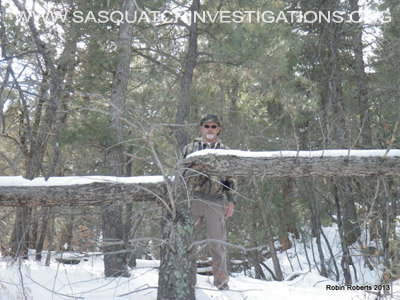
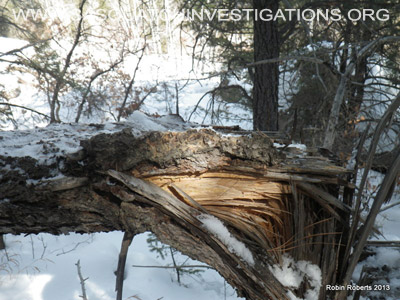
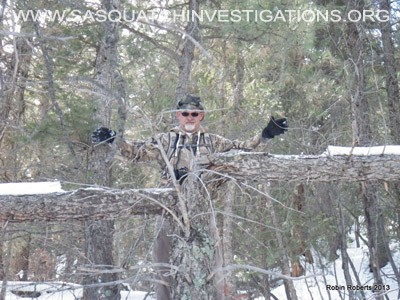
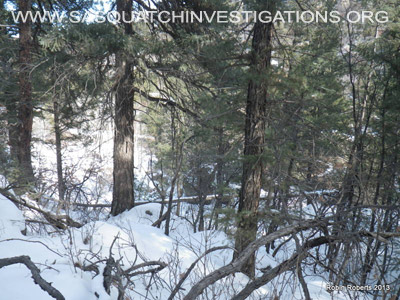
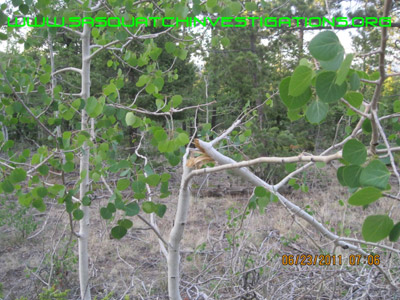
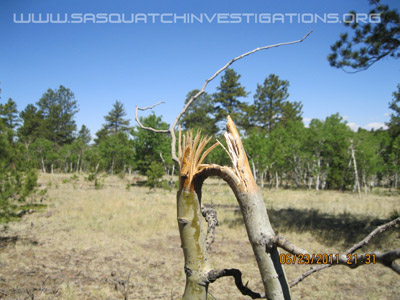
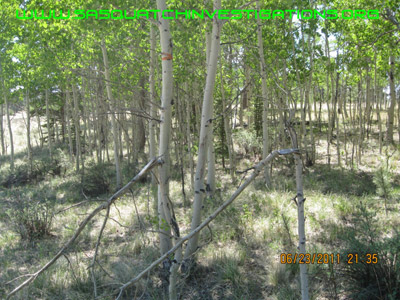
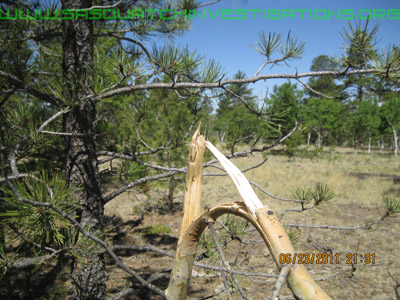
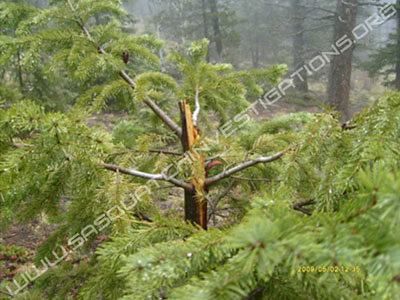
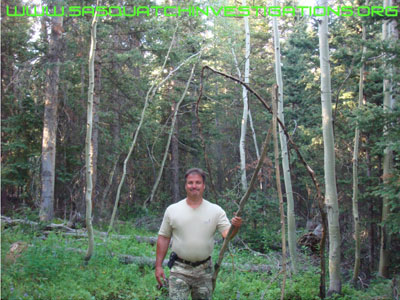
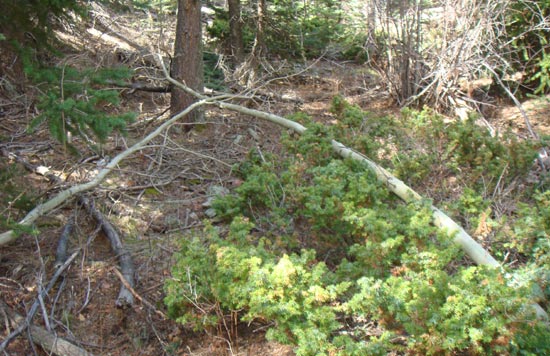
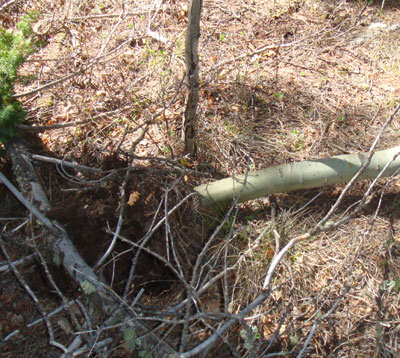
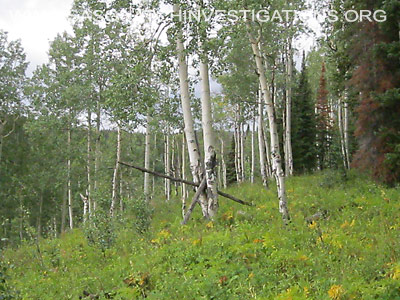
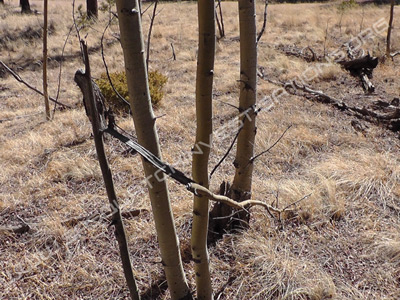
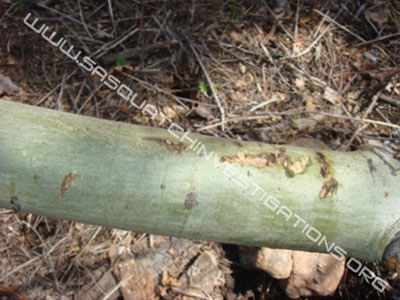
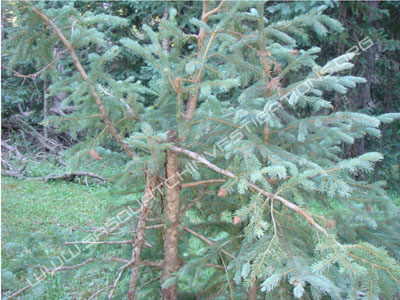
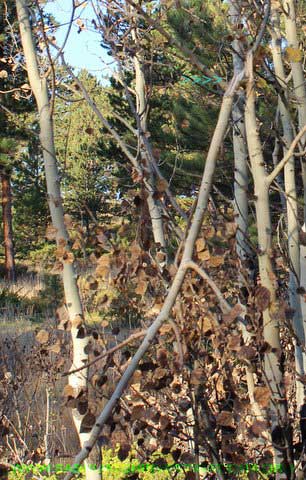

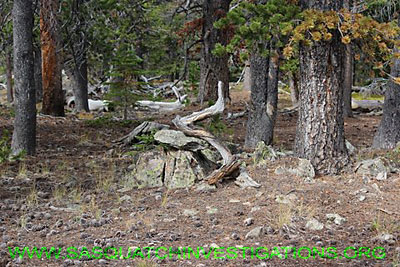
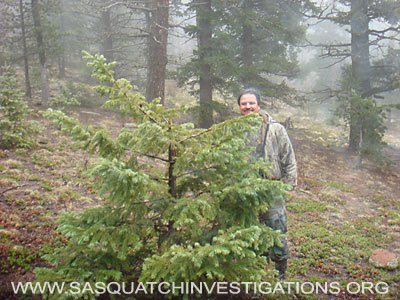
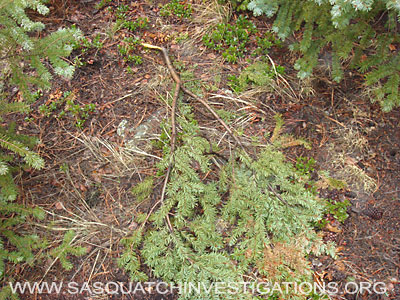
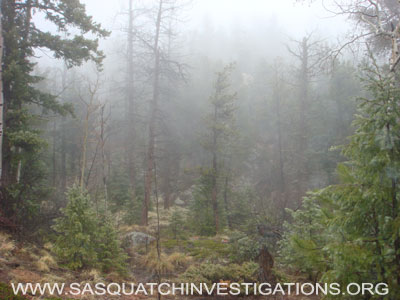
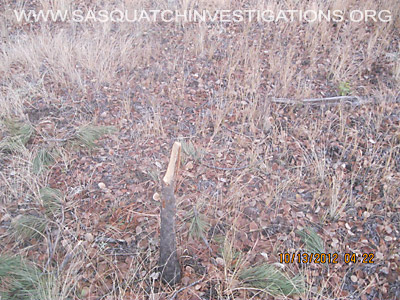

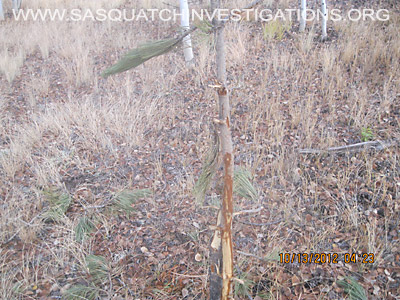
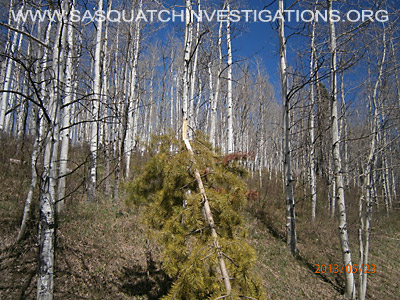
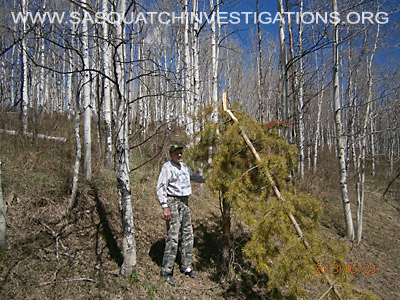


{ 6 comments… read them below or add one }
why would bigfoot need to break tree’s? DOes he want us to really find him or is he leaving evidence for danger if you go near?
Thanks for posting. Theres hundreds of those “squatch breaks” in my area. Yea some obviously are natural but for the most part u can distinguish between the 2. Im on the east coast so our terrain is a bit diffrent but i believe all squatches will do tree snaps. Why im still not sure i believe it may be for territorial markers but that is only speculation. You have been blessed to see one i have had them very close but just out of eyesight. Anyways thanks again for posting.
Excellent studies!
first off i am a believer …had the good fortune to observe one in the middle of the road for over 30 seconds as a young man and another while hunting at close range when in my thirties. this summer we had activety around our summer trailer. a rock off the roof at about 10pm, could hear something leaning on my car making the metal pop, strange human like whistles and screen torn into pieces and placed around the car in a semi circle. then on day pulling in i believe i caught a glimpse of one running off through a clearing in the bush. decided to investigate the forest behind my trailer and found all kinds of trees broken off, not cut. i had walked this route before to a spring back in the forest and had easy going. now i found the trees were arranged in a fashion that caused my to zig and zag and every time i took a new route there was another obsticle forcing me to go another way again. after ten minutes i gave up. my theory is that knockdowns may be arranged to allow for easy escape and or herd game in a certain direction. any thoughts out there.
I have come across some of what I consider ‘Sasquatch trail sign’ here in my area of Washington state. I have started looking at things a little differently as far as fallen and bent trees are concerned. Any bent or arched trees I see, I look to see if it has been pinned under something to keep it arched. I have found them with their tops wedged under logs and woven into trail side shrubs. I keep and eye out for large trees that have been uprooted and have been moved. (when a tree is uprooted the root ball usually comes up with it leaving a hole in the ground, if there is no hole where the tree is laying I suspect it of being moved.) I have started checking these “moved” trees for hair samples and was very successful on one tree that was covered in moss. I found some interesting very long hairs embedded in the moss barely detectable and hard to see. I keep and eye out for crossed logs. Small dead trees wedged into the Y of standing trees. There is one common trail near Mt St. Helens that has these X’s at both ends of it. This trail is probably walked daily by the public and they don’t even know what has happened around them. This is an interesting subject but you do need to know what happens naturally with tree falls, past logging, and natural tree arching.
I think the arched and pinned trees are trail signs that point the way of travel. I think the moving of large trees maybe a show of strength as part of a mating ritual to impress a potential female. The X’s probably mean do not enter.
There is one other type of “sign” I found. Tree sculpting. The bending of living trees into Teepee or pyramid type shapes I have a poor video of this sculpting on my blog. Look for “the house that Bigfoot built” if you would like to see it.
Lastly, beware nature can fool you. All sorts of funny things happen in the forest and have nothing to do with any mythical beasties
Hello! Do you ever get up to Estes Park to investigate? My parents live out of town a ways and have heard blood curdling screams. My husband and I found a gigantic footprint in the snow close to their house. Curious if you’ve been this way and if you have see evidence.